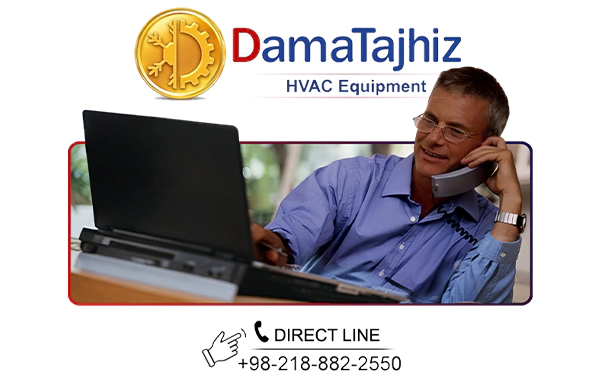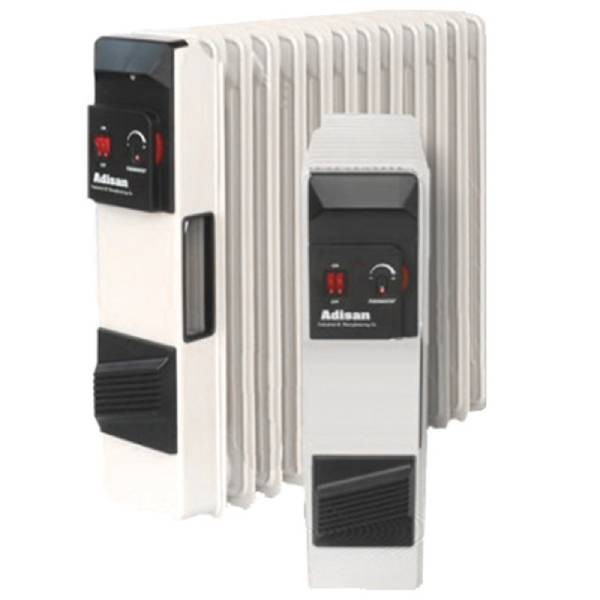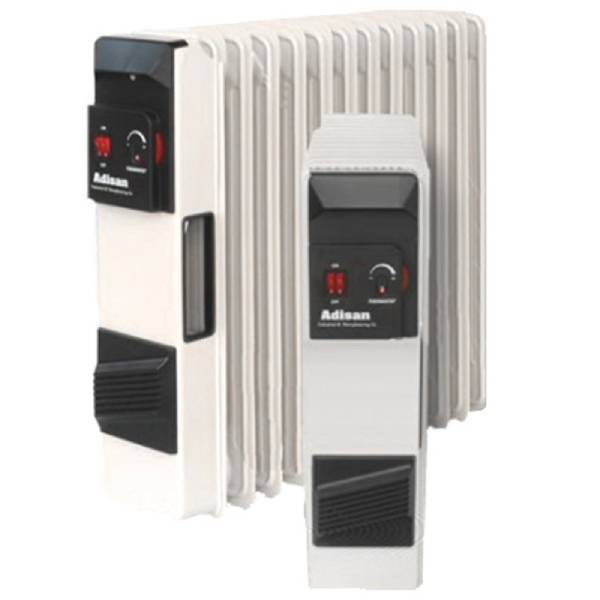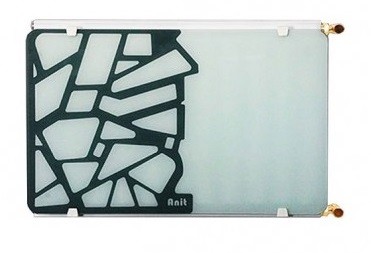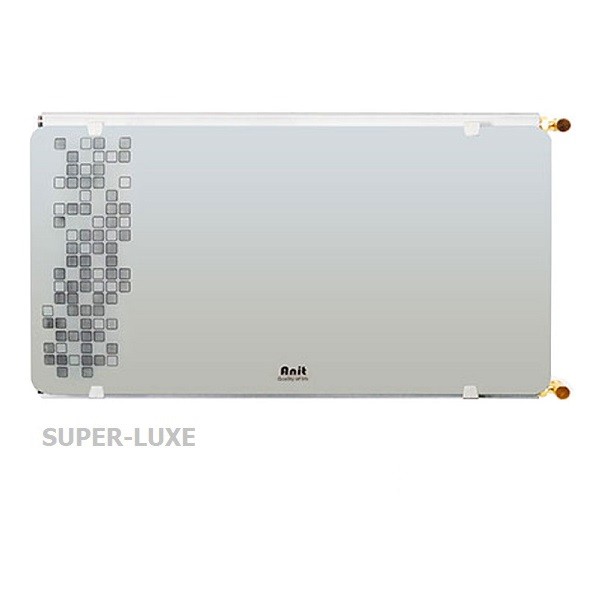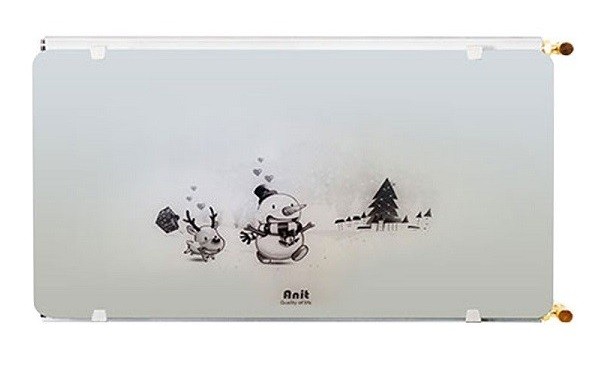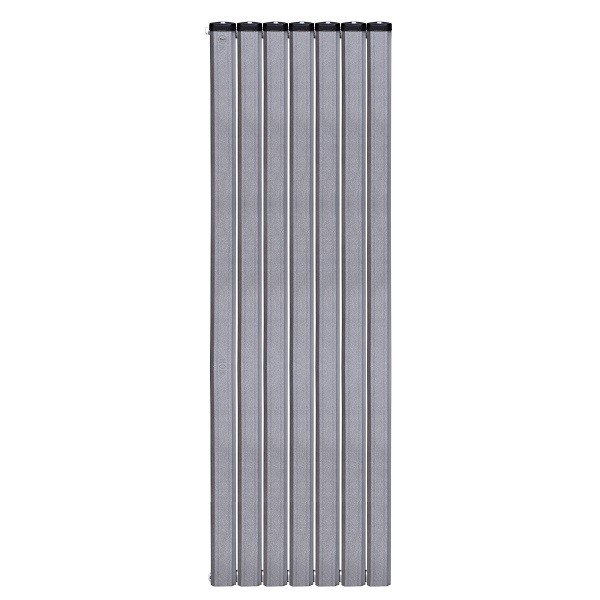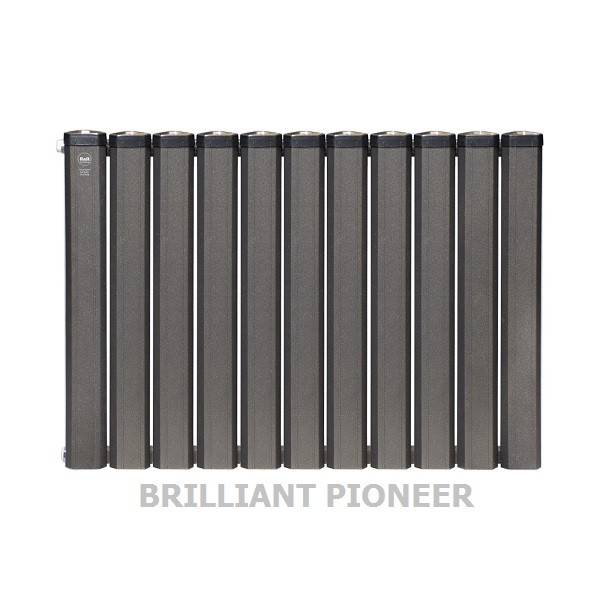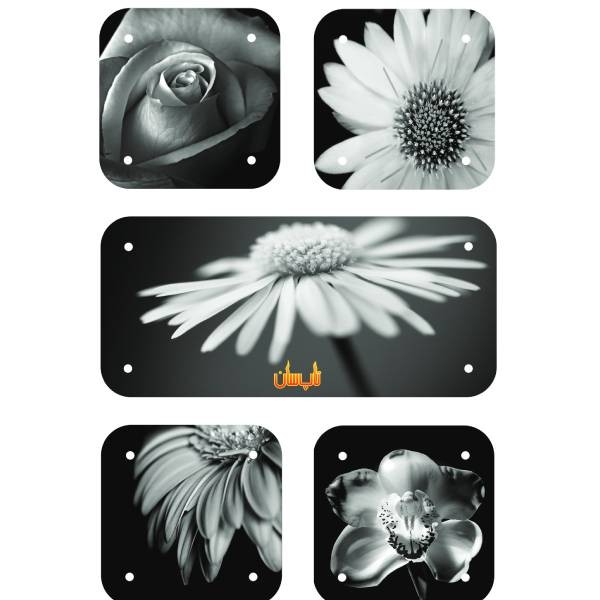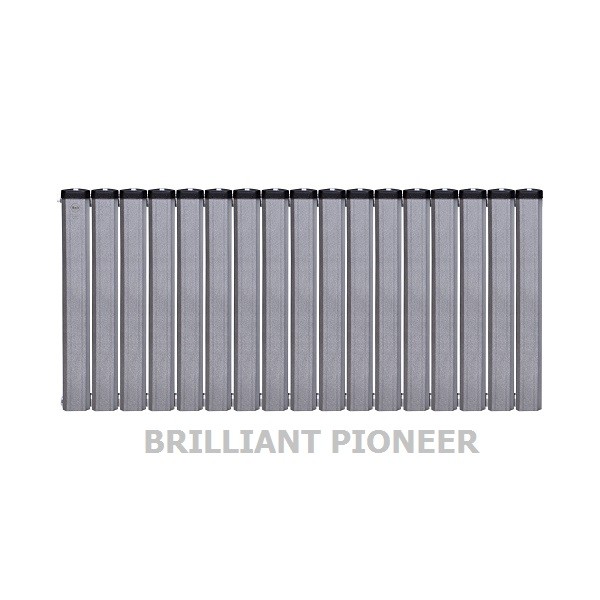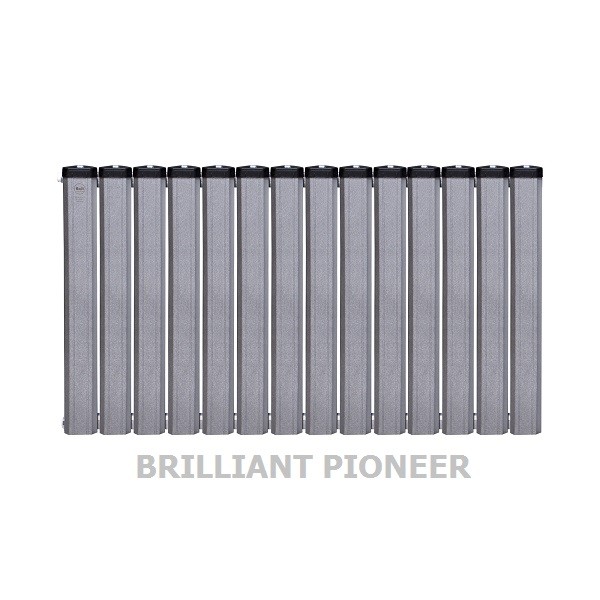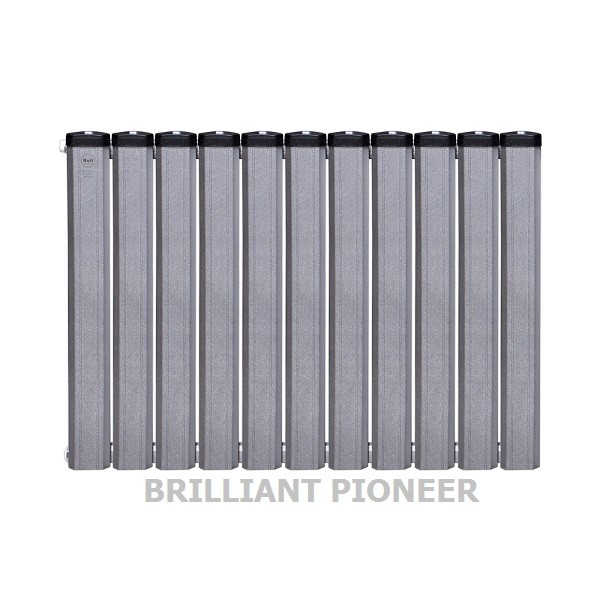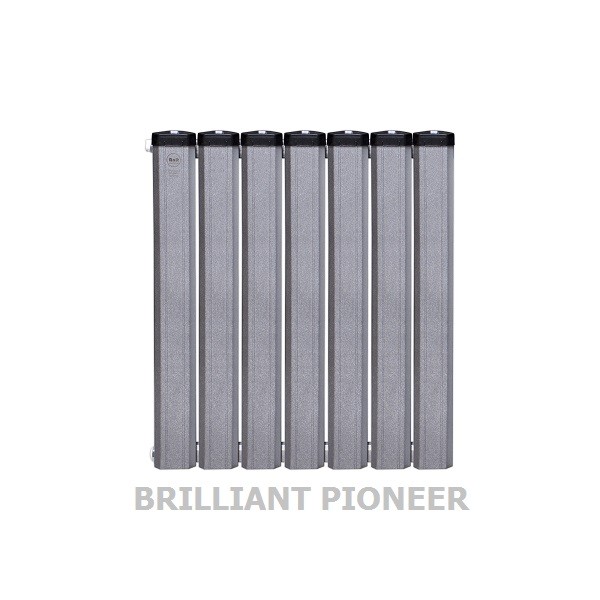Radiator
Using a radiator is one of the most common ways to provide heating for buildings. In the following content technical specifications, capacity calculation, models and brands, how to buy, and the best price for all types of radiators are provided so stay put.
Radiator Expert Buying Guide and Price List
The hot water or steam supply for the radiator is heated by equipment such as torches and boilers in the building's central heating system.
The hot water or steam is then directed to different parts of the building by a pump, and enters the radiators, then transfers its heat to the environment through the radiators.
The heat of radiators is distributed through heat transfer and displacement in the air near them. After the air is heated in the vicinity of the fins, the hot air moves upwards and then the cold air replaces it. This continuous flow of air causes the room temperature to gradually warm up.
Radiators don't usually affect humidity, because they reduce the ability to adjust the temperature and humidity of the room relatively. However, by using a thermostatic valve, you can completely adjust the temperature of your environment in addition to saving energy consumption by about 30%.
Note: Due to the accumulation of hot air under the ceiling, the use of radiators is suitable only when the distance between the floor and the ceiling of the desired location is 3 meters max. For spaces with a higher ceiling height, the use of blower heaters such as fan coils, heater units, fan and radiation heaters, air conditioners, air washers, etc. are recommended.
Review, Selection, and Pricing of HVAC Equipment
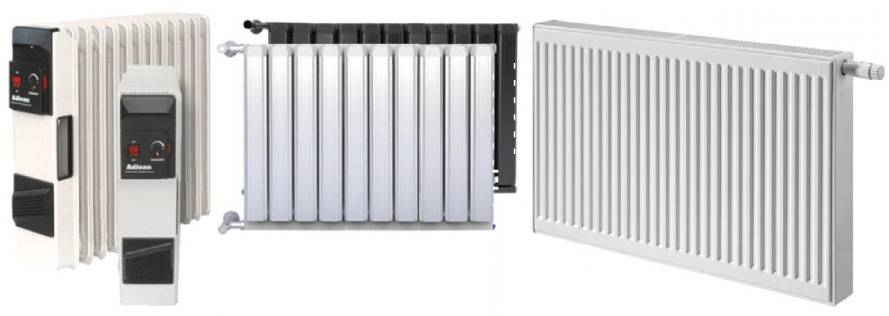
Different Types of Radiators
The types of heating radiators used in residential and office buildings mainly include the following:
Aluminum Radiator
Aluminum radiators are produced from suitable A413 aluminum alloy and mainly in diecast form, in blocks of 3, 5, 7, and 10 fins. These radiators are completely stainless, beautiful, stylish, and in terms of price, they include the highest price category among other types of heating radiators. You can learn about this type of radiator at the DamaTajhiz HVAC store's Aluminium Radiator page.
Panel Radiator
Panel radiators are included in the group of steel radiators and are a new model of steel radiators that are more beautiful, with integrated light, and a more stylish form factor than the previous models of steel radiators. Panel radiators are usually supplied in panels of 50 to 200 cm.
Panel Radiator Pros & Cons
Panel radiators are made of steel and today their use has become popular in most of Europe. The use of panel radiators is increasing compared to other types of steel radiators, due to their elegance and beauty and more reasonable price.

Pros:
- More uniformity in ambient heating compared to finned radiators.
- Higher radiation levels compared to finned radiators (the higher the contribution of radiant heating the more pleasant it will be in terms of the physiology of the human body).
- Beauty and compatibility with most interior decorations.
- Seamless installation and good sealing.
- Possibility of installation on both sides of the block.
Cons:
- Due to the use of steel, there is a possibility of rusting and holes in them compared to aluminum radiators, especially in tropical conditions and in long terms of use.
- If the panel is damaged and punctured, there is almost no possibility of cost-effective repair of the panel and the entire panel must be replaced.
- It is not possible to increase or decrease the thermal capacity of these radiators. In such cases, the thermal capacity can be increased by branching off the heating pipe and using a separate radiator panel.
Electric Radiator
Electric radiators have limited heat and are very safe, beautiful, silent, and sometimes portable, and are produced in all types of materials such as metal, glass, etc. The use of electric heaters to provide suitable heat is one of the most popular and favorite choices, due to the ease of operation, safety, and silent operation.
Electric radiators mainly have 5-to-15 fins and a power consumption of 900 to 2000 watts. Also, electric radiators usually have an automatic thermostat, they are produced in low and high heating capacities. Some electric radiator models have a fan to speed up the distribution of hot air.
The electric radiator is suitable for optimal and continuous heating in small to medium-sized environments and is safer due to the lack of direct connection with the element or heat-generating factors.
How Electric Radiators Work
An electric radiator which is also known as an oil radiator has the general shape of a radiator and inside it is filled with oil instead of water.
The oil heating element is placed inside the electric radiator and when the oil is heated by the convection system, hot oil is transferred to the top and cold oil to the bottom of the device and this cycle continues. The heat capacity of the oil causes absorption of more energy in less volume compared to water.
Note: The oil in this heat transfer device is permanent and does not need to be changed at any time.
Electric Radiators Vs. Heater
Compared to a gas heater, an electric radiator has greater safety and a relatively higher electricity cost, and for this reason, it is recommended to use electric radiators as additional heating in the bedroom and small-to-medium-sized rooms, because gas heaters should not be used in the bedroom in terms of safety, especially the models without chimneys.
Another advantage of all-electric radiators is the ability to move them around using the wheels installed at the bottom of these radiators.

Choosing the Right Number of Fins for Electric Radiators
A 5-7-fin electric radiator is suitable for a room of 6 to 8 square meters with a ceiling height of about 2.8 meters and in not very cold weather conditions.
A 7-9-fin electric is perfect for a room of 8 to 10 square meters with a ceiling height of about 2.8 meters in not very cold weather conditions.
A 9-11-fin electric radiator is perfect for a room of 10 to 12 square meters with a ceiling height of about 2.8 meters in not very cold weather conditions.
An 11-13-fin electric radiator is perfect for a room of 12-15 square meters with a ceiling height of about 2.8 meters in not very cold weather conditions.
Plinth Radiator
Plinth radiators are installed around the perimeter wall of the building which can increase the temperature of the environment in winter very efficiently.
Towel Warmer Radiator
Towel rails, towel warmers, towel dryers, or towel radiators are usually installed and used in bathrooms. These types of heating radiators also have beautiful and diverse types, sizes, models, colors, and designs that are presented on the Damatajhiz HVAC store's "Towel Warmer" page.
Steel Radiator
Basically, steel radiators are produced and supplied as an inseparable block. Meaning unlike aluminium radiators you cannot add or subtract a fin to steel radiators outside the production line.
The width of each fin of the steel radiator is 4.5 cm and each square meter of the surface of the steel radiator under normal conditions and a temperature difference of 60 degrees Celsius has a heating capacity of about 440 kilocalories per hour.
Choosing the Right Number of Fins for Steel Radiators
To calculate the number of steel radiator fins needed for the spaces you can approximately consider 85 kilocalories for each square meter of useful building in the middle floors of the building.
About 95 kilocalories for each square meter of useful building for the top floor of the parking lot, and also for units that are located under the roof of the building should be considered about 120 kilocalories for warm and dry weather conditions such as:
- Saudi Arabia: Yanbu, Jeddah, Mecca, Al Wajh, Al Hufuf, Unayzah, Buraydah
- Lebanon: Baslouqit, Bdebba, Baddouaa, Abu Saad, Aassoun, Deir Janine, Halba, Hakour, Haizouq
- Yemen: Ayn Milh, Tarim, Ard al Huwayl, Ard as Suqayr, Bayt al Mudir, Al Ma'shur
- Iraq: Amarah, Nasiriya, Kut, Kerbela, Semawa, Badrah, Rafaei
- United Arab Emirates - UAE: Dubai, Difan, Bida, Ghayl, Uwaynat, Ar Rafa'ah, Lazimah, Adh Dhayd, Layyah
- Qatar: Duha, Al Rayyan, Al Daayen, Al Wakrah
- Kuwait: Jahra, Sulaibiya, Al Wafra, Abdaly, Sabriyah
- Syria: Deir ez-Zor, Al Raqqah, Al Hasakah, Hama, Daraa, Aleppo, Homs, Idlib
- Turkey: Cizre, Urfa, Batman, Siirt, Izmir, Adana, Amasya, Istanbul
- Azerbaijan: Saatly, Sabirabad, Zerdab, Imishli, Beilagan
- Armenia: Armavil, Aragatsotn, Yerevan, Syunik, Tavush, Ararat, Kotayk, Lori
Note: Those numbers are for normal conditions where the cold air does not penetrate too much inside and the presence of only one wall is exposed to the cold outside air. For each additional wall that is in contact with the cold outside air, 20% is added to the above heating values.
Now you can multiply the useful space size by the kilocalories required for heating that space. You can also consult with DamaTajhiz HVAC experts and consider the dimensions and installation location of the radiator for further instructions.
Finally, by dividing the required heating number of each of the spaces by the heat produced by each fin of your chosen radiator, you will get the right number of radiator fins you need. The heat produced by each fin of the radiator is specified in the technical specification table of that model.
Extra: We emphasize again the use of the thermostatic valve of the radiator to adjust the air temperature inside in winter as it will save about 30% of your energy consumption.
How Steel Radiators Are Made
The steel radiator production process does not require complex technical knowledge, and its steps are common operations in metal industries, including sheet metal (cutting, pressing, and forming), welding (resistance welding and (oxyacetylene) welding), paint coating, and control.
It includes the quality and the main materials used are ST12 steel sheets with a thickness of 1.25 mm. Also, in the stage of painting the steel radiators, the choice of common gray or cream color is the responsibility of the manufacturer or the customer.
Different Types of Steel Radiators
Each steel radiator block is made of two pressed ST12 steel sheets with a thickness of 1/2 mm facing each other, with hot water or steam flowing between them. Steel radiators are produced and supplied as single convectors or as double convectors.
The type of steel radiator fin is produced in different sizes, which are usually 600 x 200, 500 x 200, and 300 x 200 mm. It shows the width of the radiator fins and the numbers 600, 500, and 300 are the distance from the bottom axis to the top of the steel radiator in millimeters.
- The thermal surface of the 600 x 200 steel radiator is equivalent to 0.31 square meters
- The thermal surface of the 500 x 200 radiators is equivalent to 0.26 square meters
- The thermal surface of the 200 x 300 steel radiator is equivalent to 0.18 square meters.
Note: The connection of the radiator fins to each other can usually be done by welding or by using round left and right ribs only in the production line.
Radiator Buying Guide
According to the dimensions of the installation location and calculating the heat loss of the desired space, you can choose the number of radiator fins you need according to the shape, dimensions, and heating rate of each radiator model using the technical specifications table for that model.
Factors to Consider When Buying a Radiator
Our emphasis is on the accurate calculation of the building's thermal loads using related software, as well as the verification of the calculation results by an engineer, which will definitely reduce your costs during the purchase and implementation phase.
It is necessary to install the radiators near the peripheral and cold walls of the building such as under the windows and near the external walls.
Considering the high fuel costs on the one hand and also the global warming on the other hand, using radiator thermostatic valves instead of normal valves is a necessity and a completely smart and economical choice. They reduce the cost of fuel consumption by up to 30%) and also have a noticeable effect on increasing the life of the engine room and/or package.
Considering that the working pressure of radiators is between 5 and 6 bars, the installation and use of these radiators are not allowed for buildings that have more than 14 floors.
Using the radiator's automatic air valve reduces the risk of water leakage.
Regular and timely venting is one of the most necessary principles for maintaining heating equipment, and note that basic and timely air venting of the heating system should be done carefully every year at the beginning of the cold season when you have turned off the radiator water circulation pump.
Another point When choosing the required aluminum or steel radiator or panel, please pay special attention to the dimensions of each radiator block in addition to the type, material, model, color, and price of the radiator. So that it does not hit the opening of the window above it during installation or is not placed in front of the electrical sockets and at a height of 40 cm on the wall.
Radiator Installation Location
In cold seasons, heat is constantly added to the room by the radiator, but the room temperature does not rise and this temperature remains somewhat constant. The reason is that most of the heat produced is lost through the cold walls of the building.
Heat losses happen in two ways. One is the heat loss caused by the walls, such as the ceiling, floor, wall, etc., and the other one is the heat loss caused by the penetration of cold air through the window cracks. But you can reduce the amount of heat loss by using UPVC double-glazed windows and a thermostatic valve.
The height of steel radiator blocks after installation on the corresponding base is 6 cm higher than the total height of each fin, so when estimating the height required for installing steel radiators pay enough attention to the possible problem with the opening of the windows.
Buying a Radiator
Buying the right radiator requires an advertisement and sufficient information in this regard, which has a significant impact on an optimal purchase.
As mentioned, radiators are produced and supplied in different dimensions and sizes with various materials. If you have visited the market while buying a radiator, you will undoubtedly come across dozens of different brands, each of which has its own price, dimensions, color, and other features.
Here at the DamaTajhiz HVAC store, technical information on dozens of models of radiators, from popular brands with original warranties, has been presented for you to enjoy the good feeling of an optimal and smart shopping experience.
The Price of Radiators
Currently, due to the wide variety of products in all product groups, making an affordable purchase has become a problem. So you should be aware that the number of radiator fins affects their price. Meaning, that the lower the number of fins the lower the price, and the other way around.
We emphasize again that, choose the number of fins for each block of radiators you need using the opinion of DamaTajhiz HVAC experts to prevent any further problems.
Dear User:
While thanking you for your trust in DamaTajhiz HVAC, it should be noted that selection of selection of the desired product is based on history, brand strength, service, and product price but is ultimately determined by the customer.
However, in the radiator section, most buyers choose best-selling brands such as HTM radiators, Enix radiators, Iran-Radiators, Butan radiators, Tash panel radiators, Anit radiators, Adisan, etc., due to their quality, price, and after-sales services.
It should also be noted that all radiators presented in the DamaTajhiz HVAC store have reasonable prices and the discounts desired by consumers have already been included in these prices. If you still have any questions left, you can contact DamaTajhiz HVAC sales through WhatsApp or Email.
"Knowledge Fuels Better Choices"
Registered Trademark and Stewardship Business Licenses Issued by the Union of Virtual Business Association and the HVAC Equipment Industry.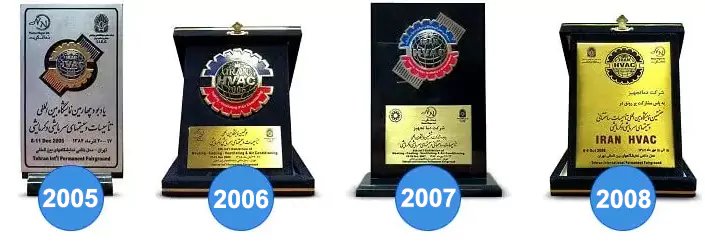
DamaTajhiz HVAC Participation at International HVAC and Construction Facilities Exhibitions Demonstrates its Global Reach and Commitment to the Industry.
We Look Forward to Your Call and the Opportunity to Meet With You
SHARE THIS CONTENT TO SPREAD THE KNOWLEDGE
| |
Head Office: No. 463,Talebian Alley,Taleghani St.Tehran,Iran


DamaTajhiz has provided the opportunity to sell and ship specialized HVAC equipment for applicants in the following countries as the first and the most popular online store for selling HVAC equipment (Heating , Ventilation , Cooling , Air conditioning) in the Middle East : Afghanistan – Tajikistan - Uzbekistan – Turkmenistan – Azerbaijan – Armenia – Georgia – Turkey – Iraq – Syria – Jordan – Kuwait – Emirates – Qatar – Oman.
